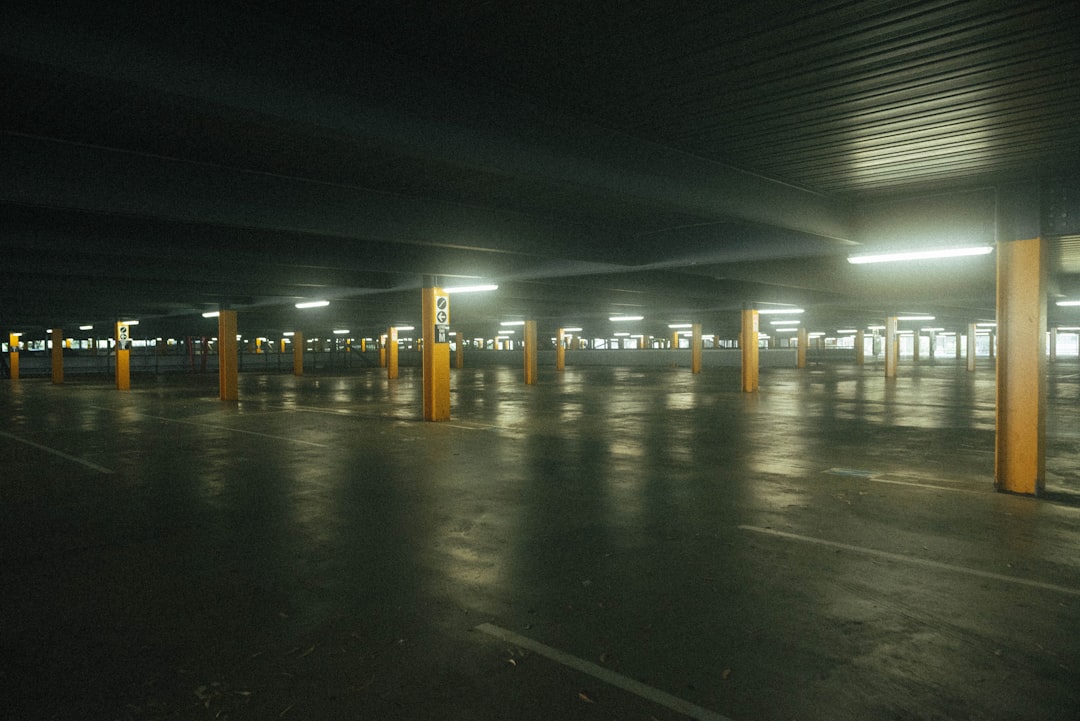Analyzing AI for Indianapolis Downtown Parking
Analyzing AI for Indianapolis Downtown Parking - How Artificial Intelligence Tools Can Inform Parking Decisions Downtown
Artificial intelligence tools are becoming increasingly relevant for guiding parking strategies in urban centers like downtown areas. By analyzing patterns within historical datasets, AI can anticipate fluctuations in parking demand throughout the day or week. This foresight allows for more adaptive management approaches, including potentially varying costs based on when demand is highest. Furthermore, systems utilizing computer vision can actively monitor spaces in real-time via cameras or sensors, providing up-to-the-minute information on what's available, which aids in directing drivers and making the most of existing capacity. While the potential for streamlining parking operations and improving convenience is clear, implementing these AI-powered solutions in practice faces hurdles. Ensuring robust data security is paramount, and effectively integrating diverse technologies can be complex. As these tools continue to evolve, their actual effectiveness and the practical challenges of deployment in a dynamic urban setting warrant close examination.
Examining how Artificial Intelligence tools can contribute insights for managing parking in downtown areas reveals several interesting capabilities:
1. It's intriguing how AI models attempt to integrate various data streams – covering everything from prevailing traffic volumes and scheduled large events to weather forecasts and transaction records – to construct forward-looking predictions about parking availability. The complexity of accurately fusing and leveraging these diverse inputs hours in advance is considerable.
2. A specific analytical application involves AI scrutinizing historical parking patterns to estimate how much time drivers might typically spend navigating downtown zones specifically searching for a vacant space. Quantifying this often-cited "search inefficiency" provides data points, but the methods for isolating this behavior reliably from general driving are still evolving.
3. The analytical potential extends to providing insights at a more granular geographic scale than just broad districts. AI aims to generate data-informed understanding of likely demand and availability down to the level of individual city blocks or specific groups of spaces, though achieving consistent accuracy at this micro-level requires robust data resolution.
4. Insights derived from AI analysis could theoretically support strategies intended to reduce the incidence of vehicles contributing to congestion by repeatedly circulating in search of parking. Demonstrating a clear, measurable reduction in this specific type of localized traffic congestion as a direct result of AI-informed interventions presents an interesting evaluation challenge.
5. Using AI systems to process real-time demand data and predictive occupancy figures can provide recommendations for adjusting parking parameters, such as altering hourly rates or time limits dynamically in specific locations. While this offers a data-driven approach to resource allocation, implementing such variable strategies brings practical and potentially societal questions into focus.
Analyzing AI for Indianapolis Downtown Parking - Examining Computer Vision for Space Detection
Computer vision provides a method for discerning parking space occupancy by directly analyzing visual data from camera feeds. These systems utilize software algorithms to identify whether a vehicle is present within designated parking boundaries, effectively automating the tracking of available spaces. This generates detailed, real-time information about the status of specific parking locations, offering insights into utilization patterns at a granular level. The intent is that this precise data can inform systems designed to guide drivers, potentially making it easier to find parking and reducing the need for vehicles to circle block after block. However, the effectiveness of such visual analysis is highly dependent on environmental factors; challenging lighting, adverse weather conditions, or physical obstructions can significantly degrade detection accuracy. Consequently, achieving reliable performance for computer vision in the complex and variable environment of urban parking remains a significant technical undertaking requiring ongoing development and evaluation.
Looking into how computer vision is applied specifically to figure out which downtown Indianapolis parking spaces are available reveals several interesting technical hurdles.
The core task of determining if a spot is truly occupied is surprisingly complex; algorithms must accurately differentiate actual vehicles from things that look similar under challenging conditions, such as deep shadows, standing water, or discarded objects, with lighting constantly changing throughout the day and across seasons.
These systems often rely on observing a spot across multiple video frames, essentially 'watching' to confirm that a detected object remains stationary for a significant period, thereby distinguishing a genuinely parked car from fleeting stops like quick passenger drop-offs.
More advanced implementations try to analyze the surrounding area and the state of adjacent spots to make educated inferences about the occupancy of a space even if the camera's view is partially blocked by another vehicle. The reliability of these inferences when views are highly obstructed in busy downtown lots is something to scrutinize.
Moving beyond a simple 'occupied' or 'empty' state, sophisticated models are being developed to potentially classify the type of vehicle present or even flag instances where a car is poorly parked, potentially straddling lines or taking up more than one space, requiring more nuanced interpretation.
Maintaining consistent accuracy over time requires careful initial alignment of cameras relative to parking spot boundaries and ongoing work to adjust for environmental changes, whether that's tree branches growing into the view or minor shifts in camera position due to wind or structural settling. It's less about a single installation and more about continuous calibration.
Analyzing AI for Indianapolis Downtown Parking - Analyzing Data Needs for AI Powered Parking Insights
Achieving useful analysis through AI for managing parking in urban areas relies absolutely on the information it receives. This isn't just about counting cars; it demands a constant stream of varied and detailed data. This includes not just simple occupancy but also fine-grained patterns of use over time and across locations, influences on demand like current events or unexpected disruptions, and perhaps even proxies for how people search for spots. Collecting and processing this vast quantity of data reliably and in a timely manner presents considerable operational difficulty. Furthermore, smoothly bringing together information from different systems – like various sensors, payment records, or external public feeds – at scale is a significant technical and logistical task. This introduces complications related to inconsistencies in data quality, gaps in coverage, and the fundamental need for diligent data oversight and protection throughout the entire process. The practical insights generated by AI, such as predictions or recommendations, are ultimately constrained by how complete, trustworthy, and well-maintained this foundational data proves to be.
Here are a few observations about the foundational data required for training and operating AI systems that aim to provide insights into parking dynamics:
Consolidating numerous data streams—ranging from sensor readings confirming vehicle presence and timestamped payment records to less standardized information like public event schedules or real-time updates on road closures—into a unified, usable format for AI presents a considerable data engineering challenge, ensuring timing and consistency across diverse inputs.
The operational data feeds from actual parking environments seldom arrive perfectly clean or complete; designing AI models and data pipelines that can reliably produce accurate predictions or detections even when faced with substantial missing information, noisy signals, or sensor glitches is a fundamental necessity and a persistent area of work.
AI's predictive accuracy relies heavily on patterns observed in historical data, but the underlying context in a dynamic downtown area is constantly shifting due to new developments, changes in traffic flow, or evolving user behavior; this demands a continuous loop of data acquisition and model updates to prevent insights from quickly becoming outdated or irrelevant.
Training AI to understand rare parking events, anticipate demand in newly configured areas, or cope with unusual scenarios is difficult when real-world data for these specific situations is sparse; generating realistic synthetic datasets through simulation is increasingly recognized as a necessary step, though creating synthetic data that genuinely mimics complex real-world variability is its own technical undertaking.
A prerequisite for using computer vision to automatically identify occupied spaces is the creation of large, meticulously labeled datasets where humans have painstakingly identified vehicles and parking boundaries in countless images; this initial data preparation phase, requiring significant manual effort and quality control, forms the bedrock upon which the vision models are trained.
Analyzing AI for Indianapolis Downtown Parking - Operational Challenges and Future Integration Possibilities
As Indianapolis continues its exploration of embedding AI within its downtown parking management, certain operational complexities become apparent, alongside emerging possibilities for the future. A primary operational challenge is the fundamental need for high confidence in the accuracy and dependability of data originating from various sources; inconsistencies here directly impede the AI's capability to inform effective decisions. Merging disparate flows of information—from various sensor inputs to external public information feeds—introduces substantial logistical and technical hurdles that require rigorous management. Thinking toward the future, as AI tools potentially become more robust, there's potential for refining parking strategies in novel ways. This could include approaches such as adjusting parking rates based on prevailing real-time demand or employing predictive analysis to streamline the user experience of finding a space. Crucially, implementing any of these advanced applications successfully will demand persistent scrutiny of their actual impact on urban circulation and a thoughtful approach to navigating the wider community considerations they inevitably raise.
It's noteworthy that deploying and sustaining a vast network of sensors or cameras across the diverse conditions of a downtown environment presents a substantial logistical and cost challenge, demanding consistent, hands-on physical maintenance beyond software upkeep due to wear and tear or unexpected physical interference.
From a system reliability perspective, one significant concern involves the potential for sophisticated attempts to deliberately feed the AI misleading data – a type of "adversarial attack" that could specifically manipulate sensor readings or image inputs to cause the AI's assessment of parking availability to be incorrect, potentially disrupting operations.
The practical reality of processing continuous streams of data, especially high-resolution video from potentially many cameras, requires significant computational resources; it's interesting to examine the scale of the necessary computing infrastructure and the associated electrical energy consumption needed to keep such a system running effectively in real-time.
Looking ahead, a compelling potential avenue involves directly connecting the AI's real-time and predictive availability information into in-vehicle navigation systems, allowing cars themselves to receive dynamic routing instructions that theoretically optimize the search for parking, though the technical and privacy implications are considerable.
A crucial technical step for widespread utility would be the development and adoption of common data formats and APIs that allow the parking AI's insights to be readily consumed and integrated by a wide array of unrelated third-party applications, such as mobile transit planners or general navigation apps, overcoming siloed data issues.
More Posts from urbanplanadvisor.com:
- →The Evolution of Houston's Megabus Network Analyzing 12 Years of Transit Hub Changes Since 2012
- →7 Urban Planning Strategies for Integrating Graffiti Art in Public Spaces
- →Houston's Population Growth Slows Metro Area Adds 95,000 Residents in 2024
- →7 Urban Sponge Cities Leading the Way in Natural Flood Management for 2025
- →7 Unique Urban Development Challenges in America's Great Basin Desert
- →A Line Extension Analyzing the Impact on Los Angeles Urban Mobility in 2024

